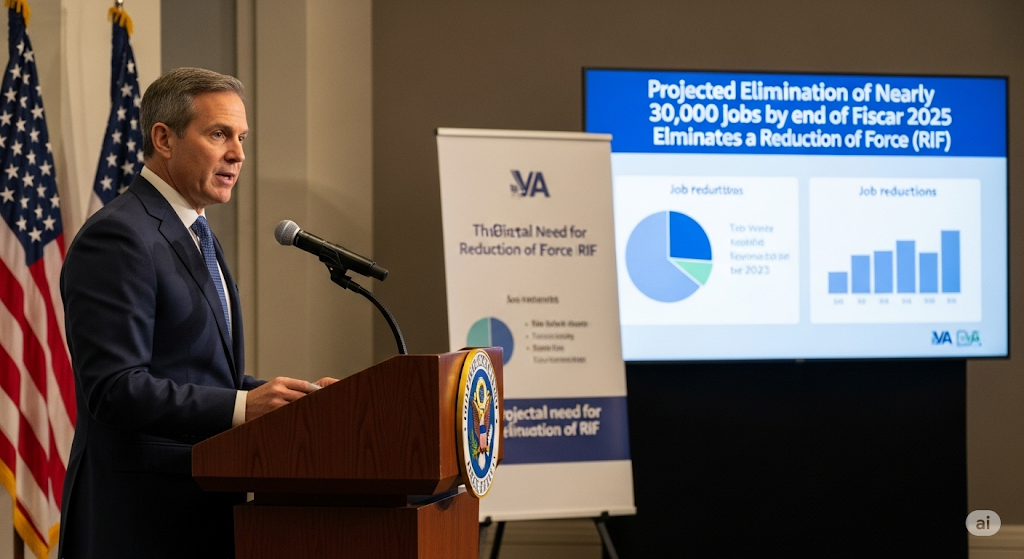VA Scales Back Workforce Cuts From 72,000 to 30,000 Positions

The Department of Veterans Affairs (VA) announced Monday it expects to eliminate nearly 30,000 positions by September 30—a significant reduction from its original plan to cut 72,000 jobs, or 15% of its workforce. The downsizing comes primarily through attrition, early retirements, and deferred resignations, avoiding widespread layoffs.
Revised Reduction Plan
- Current Cuts (Jan–June 2025): 17,000 positions lost (from 484,000 to 467,000 employees)
- Projected Cuts (July–Sept 2025): Additional 12,000 departures expected
- Total Reduction: ~30,000 jobs (6.2% of workforce)
VA Secretary Doug Collins emphasized that mission-critical roles—particularly in veteran healthcare and benefits—remain protected. Over 350,000 VA positions are exempt from the federal hiring freeze in effect until July 15.
Political Reactions
- Support: House VA Committee Chair Mike Bost (R-Ill.) praised the administration’s approach, stating the revised plan reflects “the right decision.”
- Criticism: Senate VA Committee Ranking Member Richard Blumenthal (D-Conn.) condemned the cuts, calling them “unsustainable” and warning of negative impacts on veteran care.
- Historical Context: Rep. Mark Takano (D-Calif.) noted this would still be the largest staff reduction in VA history, undermining the PACT Act’s expansion of veteran healthcare under Biden.
Behind the Scenes: Earlier Plans for Deeper Cuts
Internal documents obtained by Federal News Network reveal the VA previously considered far more aggressive reductions:
- VISN Consolidation: Discussed merging 18 regional networks into 10, potentially cutting 55,000 field positions.
- Central Office Cuts: The Veterans Health Administration (VHA) weighed slashing 30–50% of administrative staff to minimize frontline impacts.
- Uncertainty: One official admitted, “I don’t know how [cutting 55,000] doesn’t affect veterans’ care.”
VA Press Secretary Peter Kasperowicz dismissed the documents as “outdated” and not reflective of current plans.
Why the Change?
The VA attributed the scaled-back cuts to:
- Natural Attrition: Retirements and resignations reduced the need for forced layoffs.
- Operational Safeguards: Protections for critical services allowed more surgical reductions.
- OPM Oversight: The VA paid $726,000 to the Office of Personnel Management for restructuring guidance, citing lack of in-house expertise for such a large overhaul.
What’s Next?
While the VA insists veteran services won’t suffer, advocates and lawmakers remain divided:
- Republicans frame the cuts as necessary efficiency improvements.
- Democrats warn of staffing shortages as the VA handles increased demand from the PACT Act.
The department’s ability to balance workforce reductions with rising veteran needs will be closely watched in coming months.